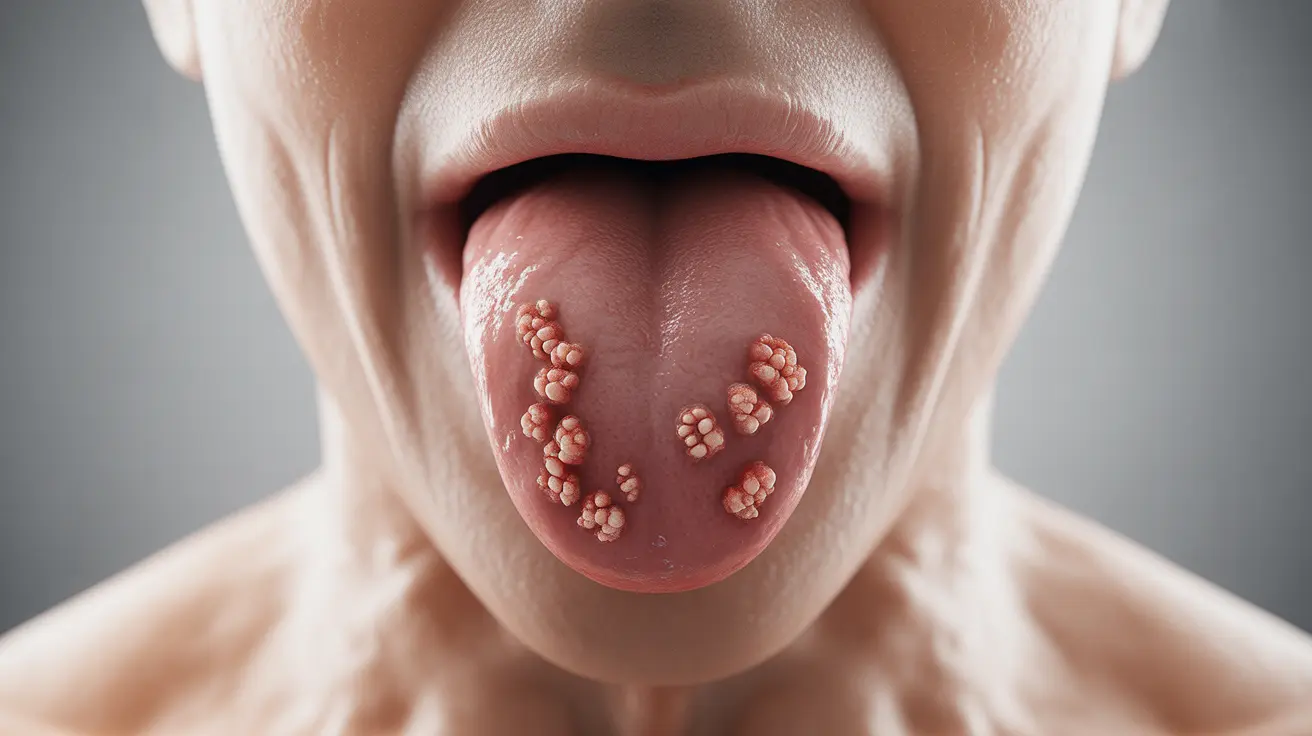If you've ever experienced small, painful bumps on your tongue that seem to appear out of nowhere, you're likely dealing with lie bumps. These uncomfortable spots, medically known as transient lingual papillitis, can be both concerning and irritating, but understanding their causes and treatments can help you manage them effectively.
While the old wives' tale suggests these bumps appear when you tell a lie, the reality is much more straightforward. These temporary inflammations of the tongue's papillae have various legitimate causes and, fortunately, several effective treatment options.
What Are Lie Bumps?
Lie bumps are small, white or red swollen bumps that appear on the surface of your tongue. They typically develop on the tip or sides of the tongue and can be quite sensitive to touch. These bumps are actually inflamed fungiform papillae, the small structures that house your taste buds.
Common Causes and Duration
Several factors can trigger the development of lie bumps:
- Stress and hormonal changes
- Spicy or acidic foods
- Food allergies or sensitivities
- Minor tongue injuries
- Poor oral hygiene
- Dietary deficiencies
Most lie bumps resolve on their own within 2-4 days, though some cases may persist for up to a week. Understanding what triggers them can help prevent future occurrences.
Home Treatment Options
While lie bumps typically heal on their own, several home remedies can help manage symptoms and promote faster healing:
Immediate Relief Methods
- Rinse with salt water
- Apply ice or cold compresses
- Use over-the-counter oral pain relievers
- Practice good oral hygiene
Dietary Adjustments
During an outbreak, consider:
- Avoiding spicy and acidic foods
- Eating cool, soft foods
- Staying well-hydrated
- Using alcohol-free mouth rinses
Prevention Strategies
To reduce the likelihood of developing lie bumps, consider these preventive measures:
- Maintain excellent oral hygiene
- Avoid known trigger foods
- Use a soft-bristled toothbrush
- Stay hydrated
- Manage stress levels effectively
- Address any vitamin deficiencies
When to Seek Medical Attention
While most cases of lie bumps are harmless and self-limiting, certain situations warrant professional medical evaluation:
- Bumps lasting longer than two weeks
- Severe pain or difficulty eating
- Recurring episodes
- Spreading or worsening symptoms
- Accompanying fever or swollen lymph nodes
Frequently Asked Questions
What causes lie bumps to appear on the tongue and how long do they usually last? Lie bumps typically appear due to irritation from spicy foods, stress, or minor injuries to the tongue. They usually last between 2-4 days, though some cases may persist up to a week.
How can I treat lie bumps at home to reduce pain and speed up healing? You can treat lie bumps at home by rinsing with salt water, applying cold compresses, using over-the-counter pain relievers, and avoiding irritating foods. Maintaining good oral hygiene also helps speed healing.
Are lie bumps contagious or a sign of a more serious health condition? No, lie bumps are not contagious. They're typically benign inflammations of the tongue's papillae and rarely indicate a serious health condition. However, persistent or severe cases should be evaluated by a healthcare provider.
What foods or habits should I avoid to prevent getting lie bumps? Avoid extremely spicy or acidic foods, maintain good oral hygiene, use a soft-bristled toothbrush, and stay hydrated. Managing stress and avoiding tongue injuries can also help prevent lie bumps.
When should I see a doctor about persistent or recurring lie bumps? Consult a healthcare provider if lie bumps persist beyond two weeks, cause severe pain, recur frequently, or are accompanied by fever or swollen lymph nodes.




